Yinghan Wang
A Unified Framework of Graph Information Bottleneck for Robustness and Membership Privacy
Jun 14, 2023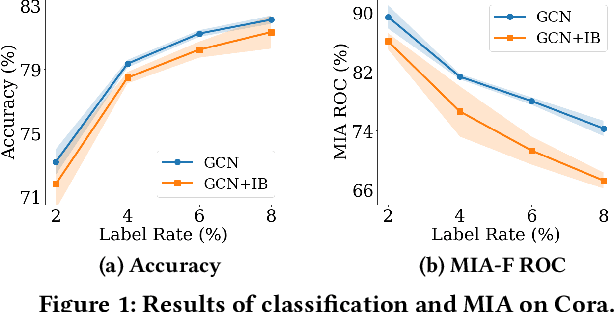

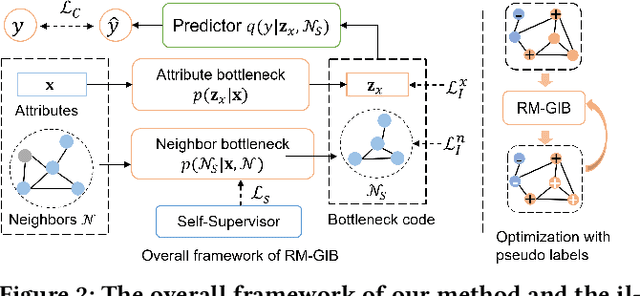
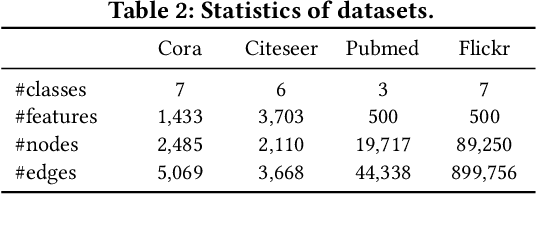
Abstract:Graph Neural Networks (GNNs) have achieved great success in modeling graph-structured data. However, recent works show that GNNs are vulnerable to adversarial attacks which can fool the GNN model to make desired predictions of the attacker. In addition, training data of GNNs can be leaked under membership inference attacks. This largely hinders the adoption of GNNs in high-stake domains such as e-commerce, finance and bioinformatics. Though investigations have been made in conducting robust predictions and protecting membership privacy, they generally fail to simultaneously consider the robustness and membership privacy. Therefore, in this work, we study a novel problem of developing robust and membership privacy-preserving GNNs. Our analysis shows that Information Bottleneck (IB) can help filter out noisy information and regularize the predictions on labeled samples, which can benefit robustness and membership privacy. However, structural noises and lack of labels in node classification challenge the deployment of IB on graph-structured data. To mitigate these issues, we propose a novel graph information bottleneck framework that can alleviate structural noises with neighbor bottleneck. Pseudo labels are also incorporated in the optimization to minimize the gap between the predictions on the labeled set and unlabeled set for membership privacy. Extensive experiments on real-world datasets demonstrate that our method can give robust predictions and simultaneously preserve membership privacy.
Adaptive Obstacle Avoidance Algorithm Based on Trajectory Learning
Jun 07, 2022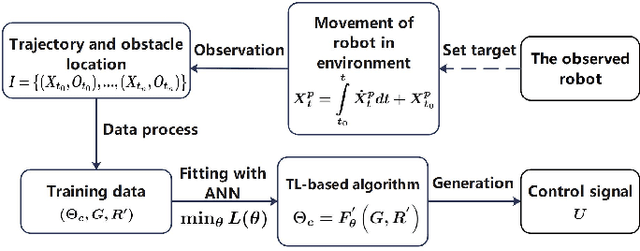
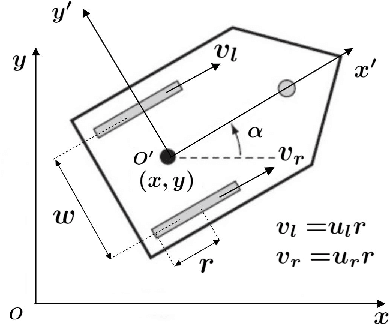
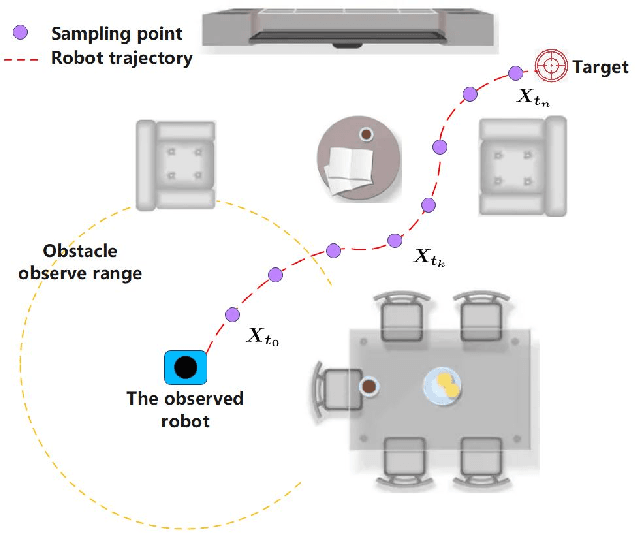
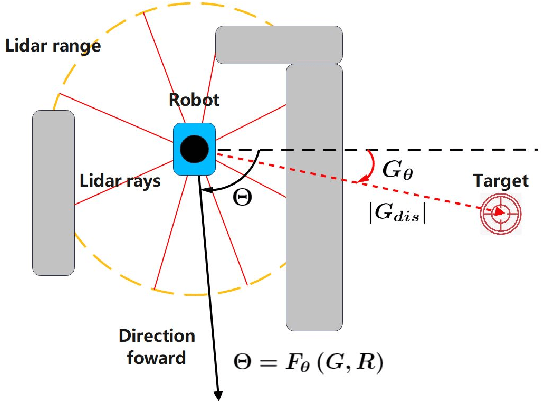
Abstract:Most obstacle avoidance algorithms are only effective in specific environments, and they have low adaptability to some new environments. In this paper, we propose a trajectory learning (TL)-based obstacle avoidance algorithm, which can learn implicit obstacle avoidance mechanism from trajectories generated by general obstacle avoidance algorithms and achieves better adaptability. Specifically, we define a general data structure to describe the obstacle avoidance mechanism. Based on this structure, we transform the learning of the obstacle avoidance algorithm into a multiclass classification problem about the direction selection. Then, we design an artificial neural network (ANN) to fit multiclass classification function through supervised learning and finally obtain the obstacle avoidance mechanism that generates the observed trajectories. Our algorithm can obtain the obstacle avoidance mechanism similar to that demonstrated in the trajectories, and are adaptable to unseen environments. The automatic learning mechanism simplifies modification and debugging of obstacle avoidance algorithms in applications. Simulation results demonstrate that the proposed algorithm can learn obstacle avoidance strategy from trajectories and achieve better adaptability.
Unsupervised Deep Keyphrase Generation
Apr 18, 2021



Abstract:Keyphrase generation aims to summarize long documents with a collection of salient phrases. Deep neural models have demonstrated a remarkable success in this task, capable of predicting keyphrases that are even absent from a document. However, such abstractiveness is acquired at the expense of a substantial amount of annotated data. In this paper, we present a novel method for keyphrase generation, AutoKeyGen, without the supervision of any human annotation. Motivated by the observation that an absent keyphrase in one document can appear in other places, in whole or in part, we first construct a phrase bank by pooling all phrases in a corpus. With this phrase bank, we then draw candidate absent keyphrases for each document through a partial matching process. To rank both types of candidates, we combine their lexical- and semantic-level similarities to the input document. Moreover, we utilize these top-ranked candidates as to train a deep generative model for more absent keyphrases. Extensive experiments demonstrate that AutoKeyGen outperforms all unsupervised baselines and can even beat strong supervised methods in certain cases.
VisualNews : Benchmark and Challenges in Entity-aware Image Captioning
Oct 13, 2020



Abstract:In this paper we propose VisualNews-Captioner, an entity-aware model for the task of news image captioning. We also introduce VisualNews, a large-scale benchmark consisting of more than one million news images along with associated news articles, image captions, author information, and other metadata. Unlike the standard image captioning task, news images depict situations where people, locations, and events are of paramount importance. Our proposed method is able to effectively combine visual and textual features to generate captions with richer information such as events and entities. More specifically, we propose an Entity-Aware module along with an Entity-Guide attention layer to encourage more accurate predictions for named entities. Our method achieves state-of-the-art results on both the GoodNews and VisualNews datasets while having significantly fewer parameters than competing methods. Our larger and more diverse VisualNews dataset further highlights the remaining challenges in captioning news images.
 Add to Chrome
Add to Chrome Add to Firefox
Add to Firefox Add to Edge
Add to Edge